The Laughing Kookaburra in My Backyard — Townsville, Australia.
Introduction
I should have been studying, but who can when these Laughing Kookas are making a ruckus? I desperately tried to catch a complete “laughing cycle” but I was unsuccessful, still though I had fun having these companions in my backyard. It looks like they nested in a hole in the tree where most of the time they would fly in and out with different types of food, which is highly indicative that there are chicks (I would say at least 2 of them).
I hope you enjoy the video and photos!
Some Statistics on the Laughing Kookaburra
DESCRIPTION:
Name: the laughing Kookaburra, known scientifically as Dacelo novaeguineae, can live up to 20 years and is an Australian icon. The Kookaburra is the largest of the Kingfisher family. Its laughter is referred to as the “bushman’s clock” and is utilised to mark its territory. Sometimes a whole family gets together to laugh, making an impressive sound and warning to other Kookas.
Size: 38 to 46 cm.
Weight: 370 - 450 grams.
Breeding season: August to January.
Number of eggs: 1-4 white eggs.
Breeding: the Kookaburra is monogamous and quite territorial. They enjoy nesting in tree holes (as seen in the YT video above). A female can lay between 1 to 4 eggs, which are looked after by the whole family, including older siblings. Both parents share the incubation duties.
Typical diet: described as a carnivore with an impressive beak that can be as long as 10 cm, the Kookaburra feeds on the ground on large insects, frogs, lizards, eggs and, sometimes, small mammals/snakes but rarely fish (although they have been seen stealing goldfish from ponds). Basically, a variety of invertebrates and small vertebrates. Sometimes when the prey is too big, you will notice the Kookaburra bashing it on the ground or whatever hard surface they can find. They also enjoy anything from the barbecue, food on the table or food from your fingers on the way to your mouth.
Habitat: they enjoy to inhabits most areas where there are suitable trees. They hunt in areas where there is dense under-storey vegetation such as grasses, rushes, bracken and sedges, in open forests and woodlands, and around wetlands.
Distribution: can be found throughout eastern Australia. They have been introduced in Tasmania, the southwest of Western Australia, and New Zealand.
The laughing Kookaburra. Credit: Andréas Astier, taken throughout November of 2023. See me on Flickr!
Some action shot of the laughing Kookaburra
Here are more photos of the laughing Kookaburra perched on trees, being together, inside a hollow tree, and in mid-flight. Towards the end, two kookaburras are perched on a green fence; these are not the laughing Kookaburra but rather the blue-winged Kookaburra. Again, there are differences, but they are subtle at first and then quite obvious when you compare them and know where to look at. I highly suggest the book “The Slater Field Guide to Australian Birds”.
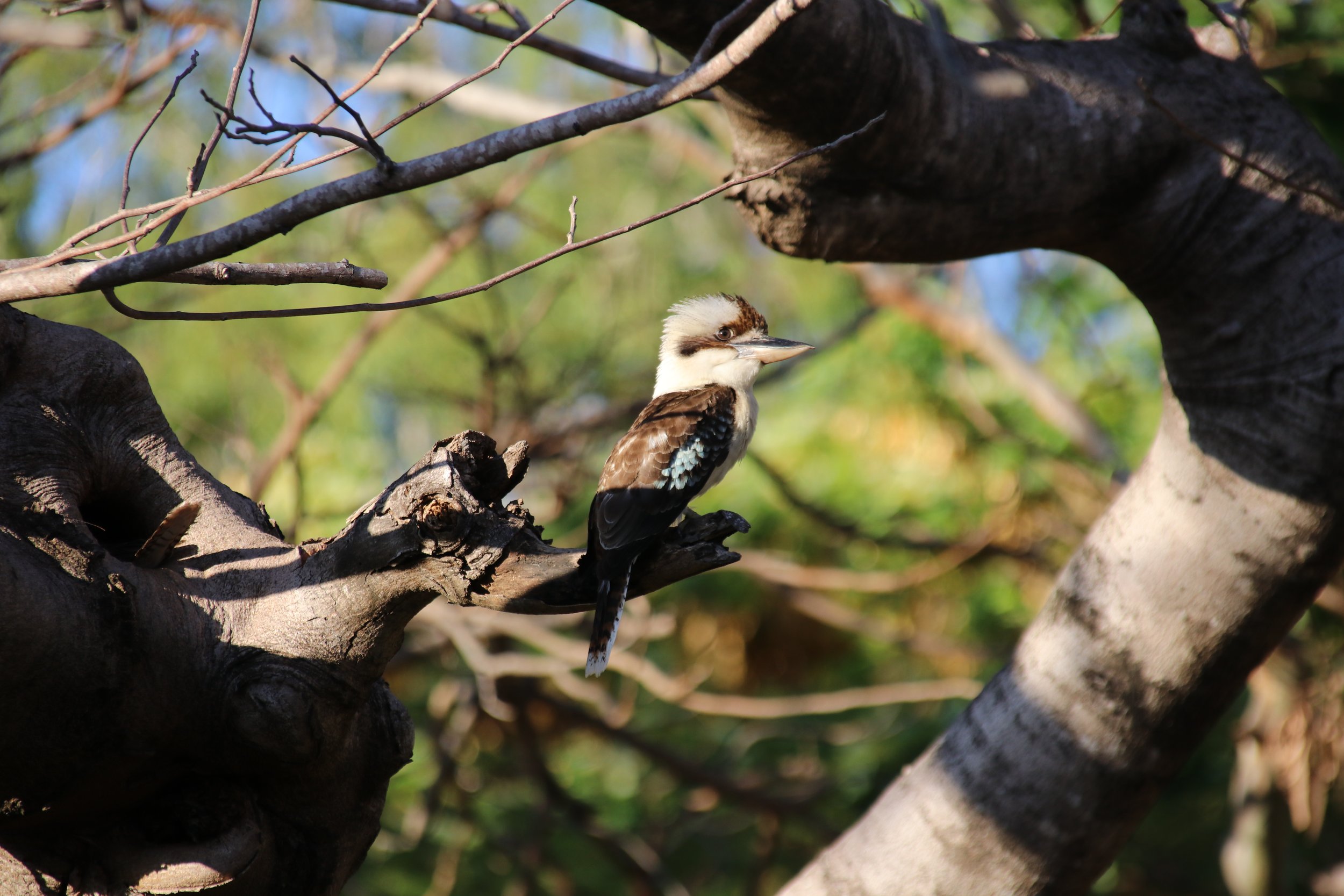
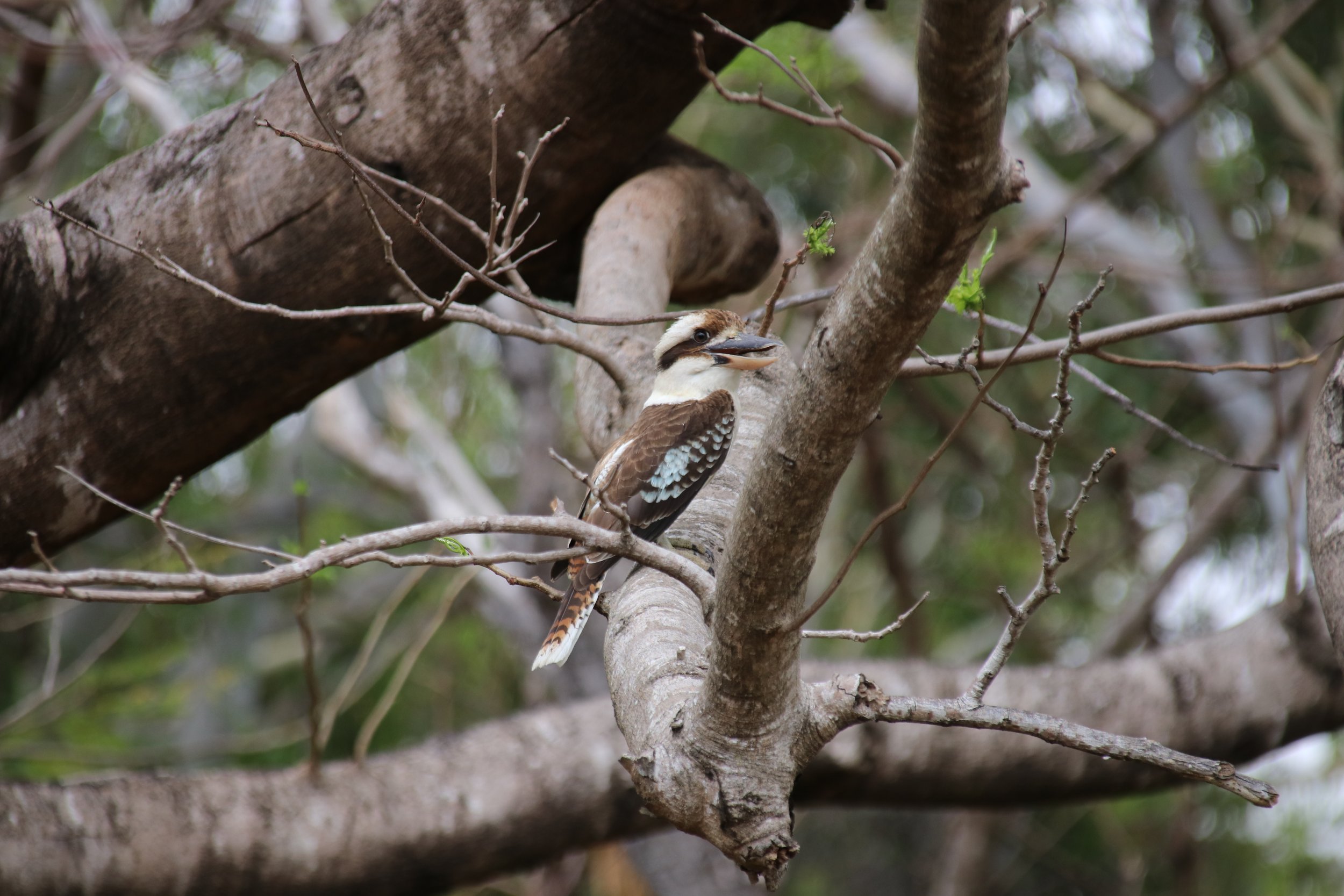
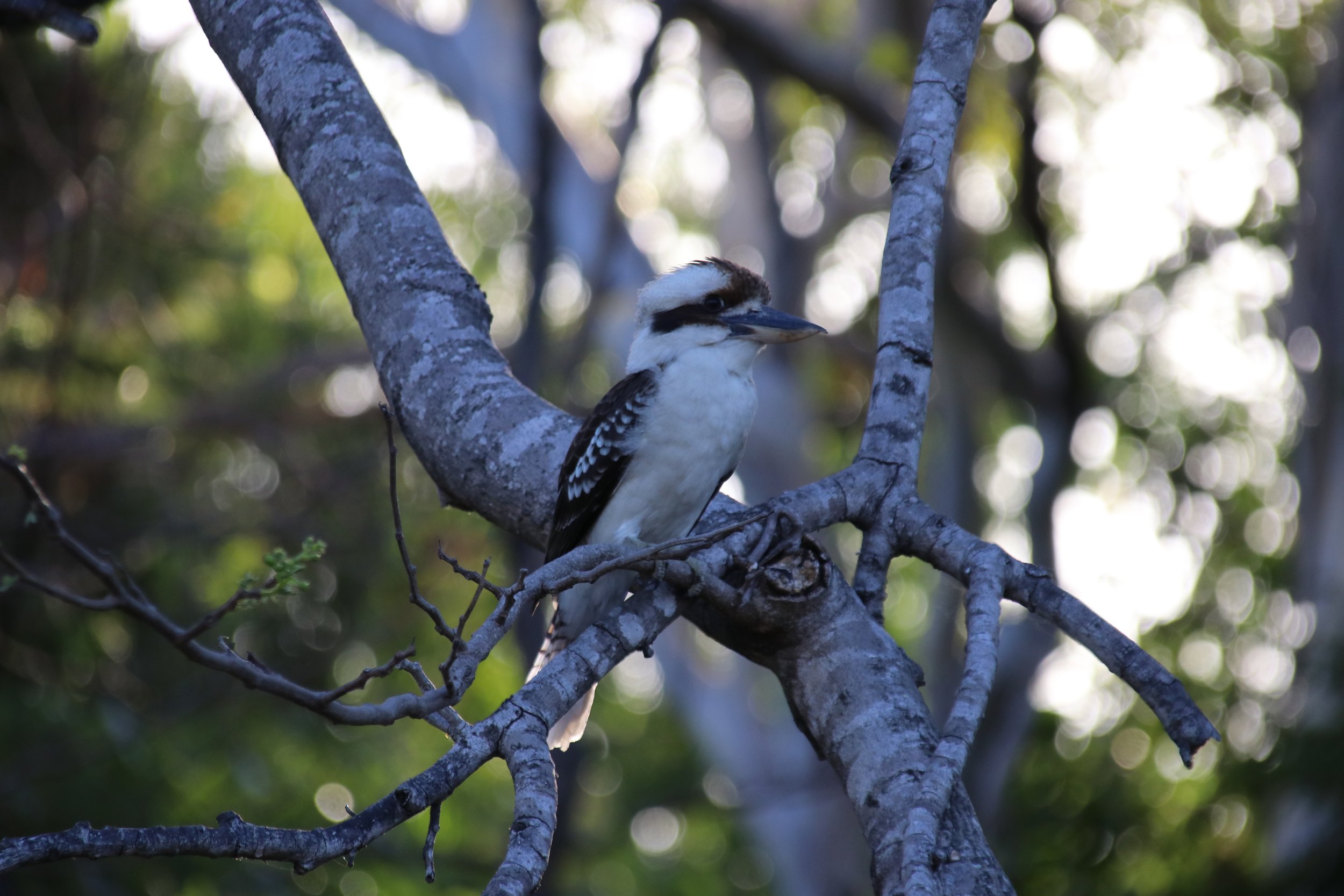
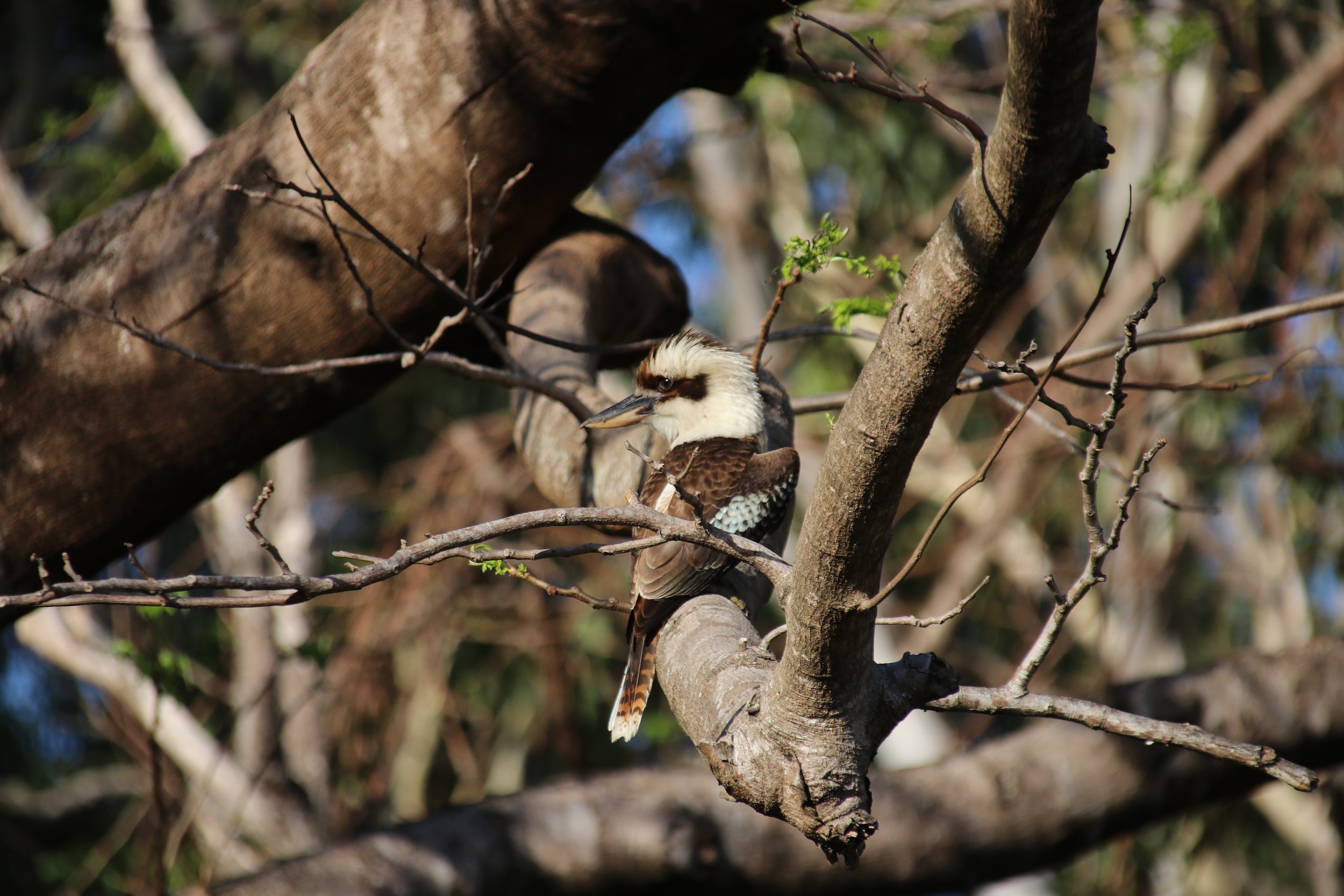

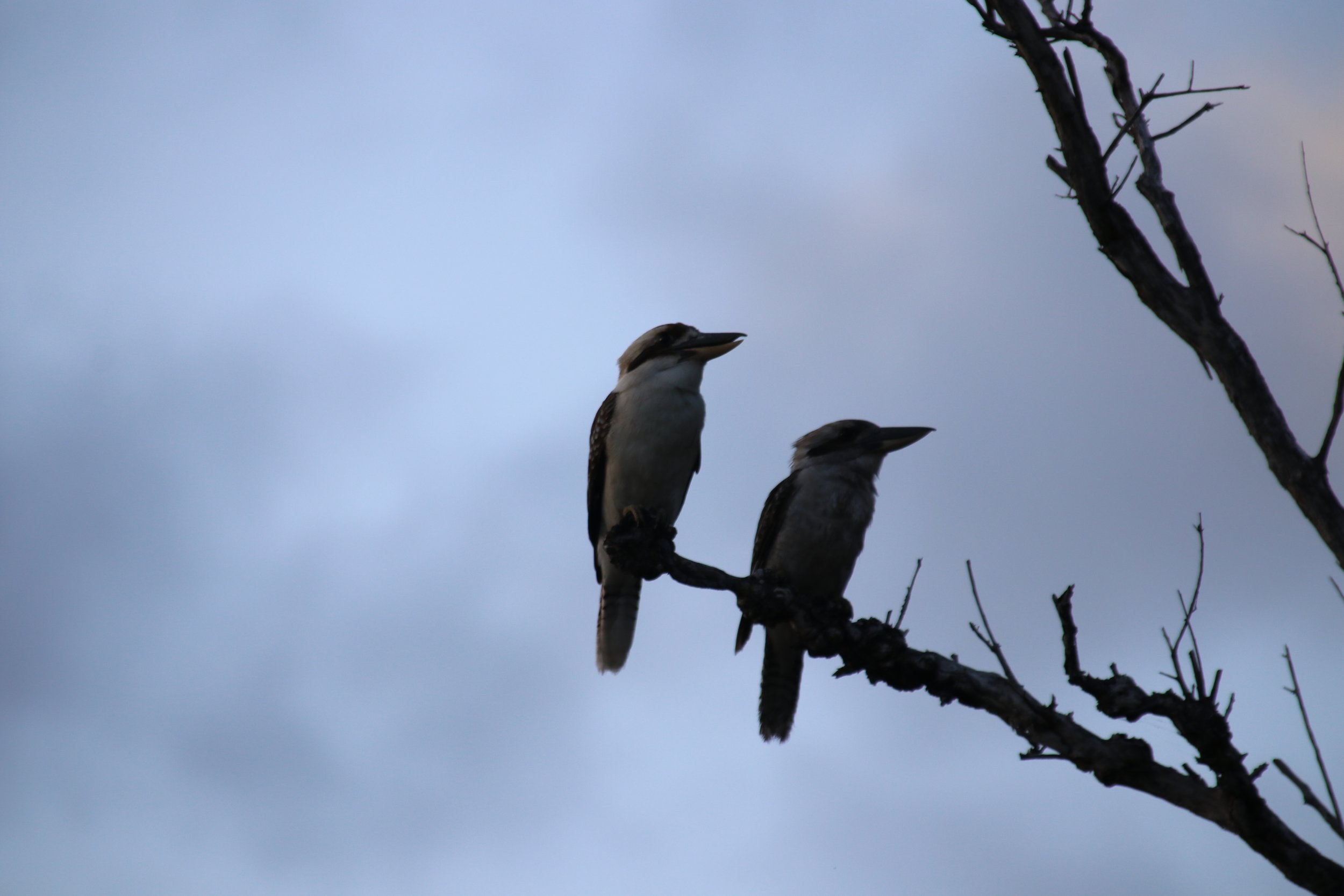
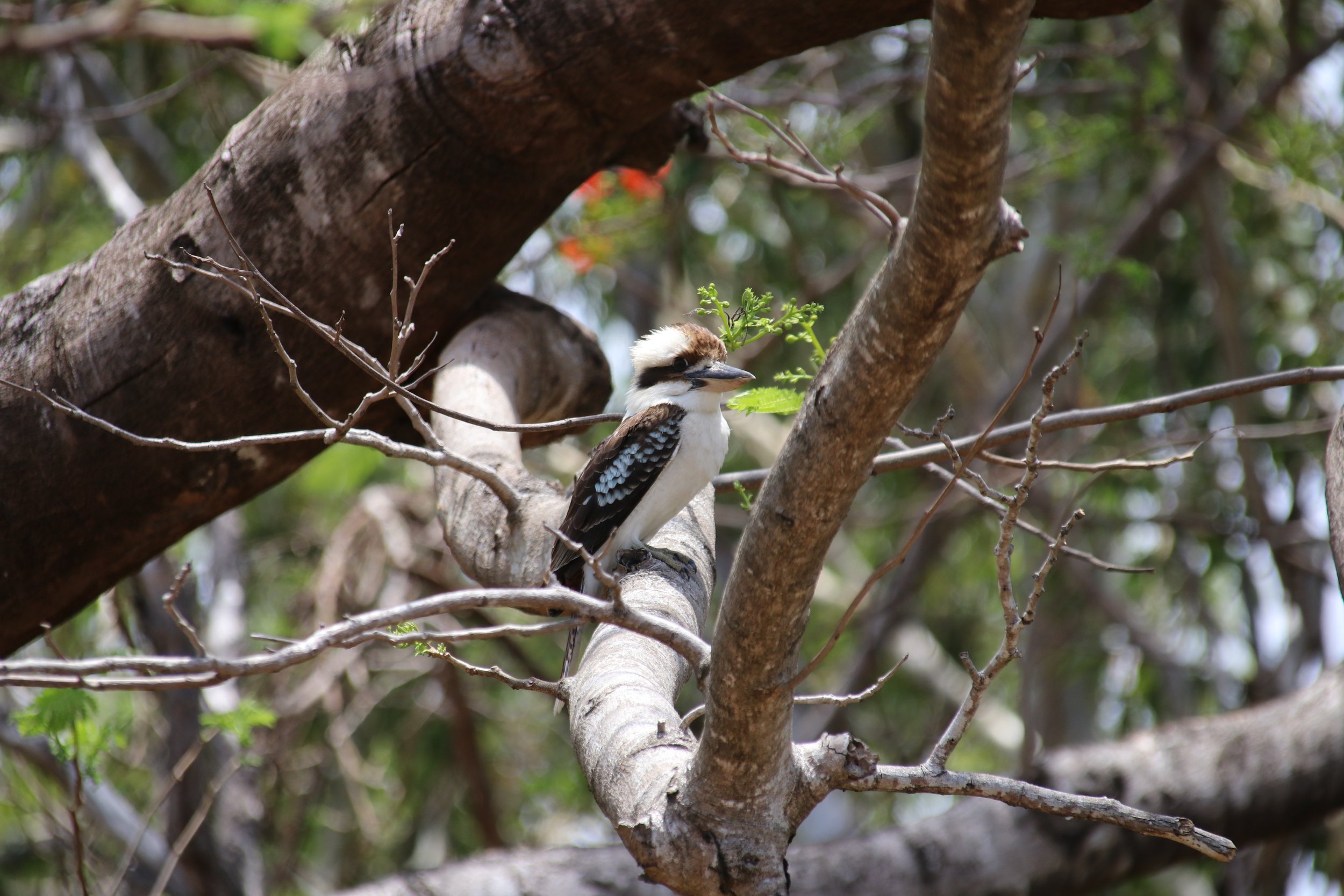
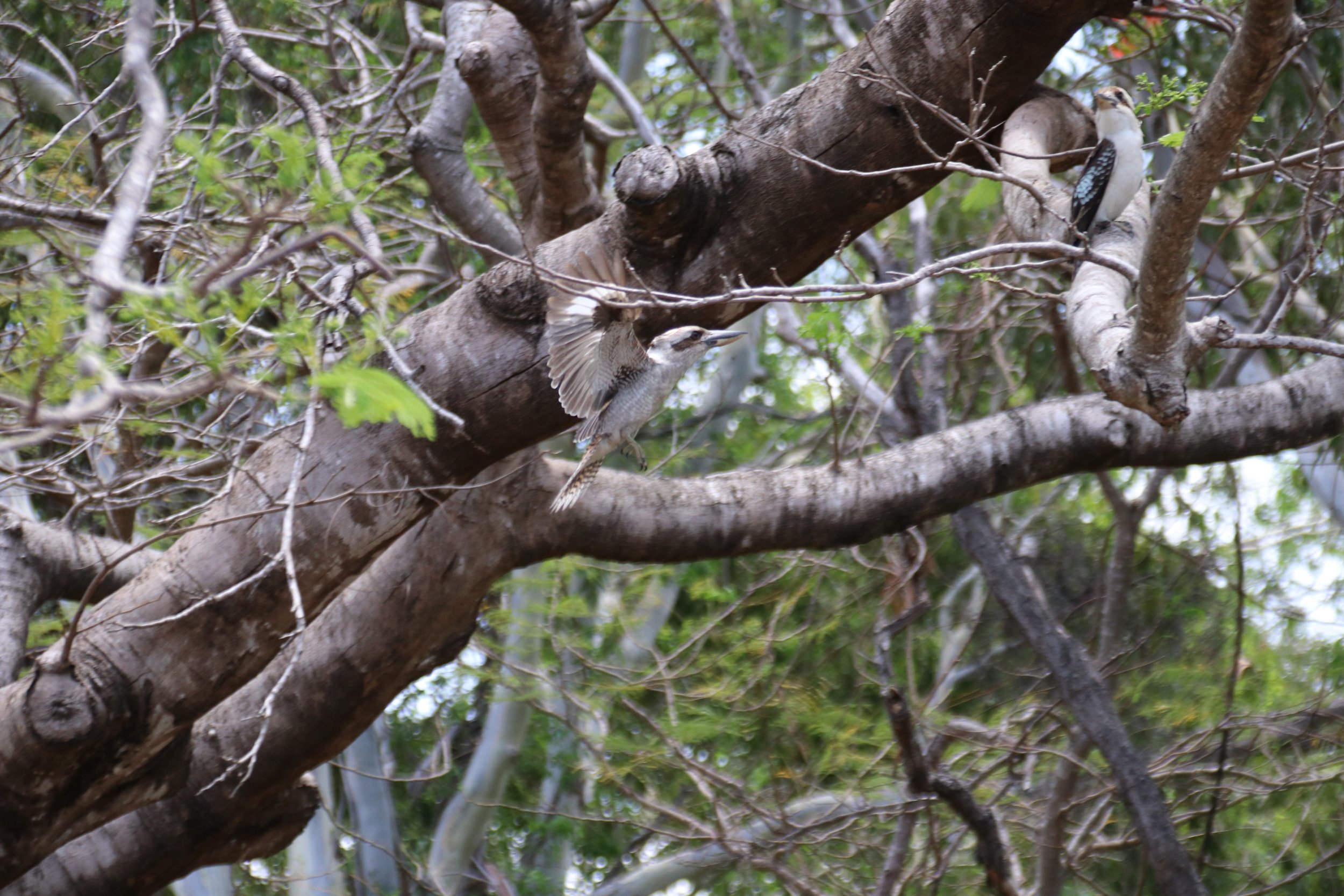
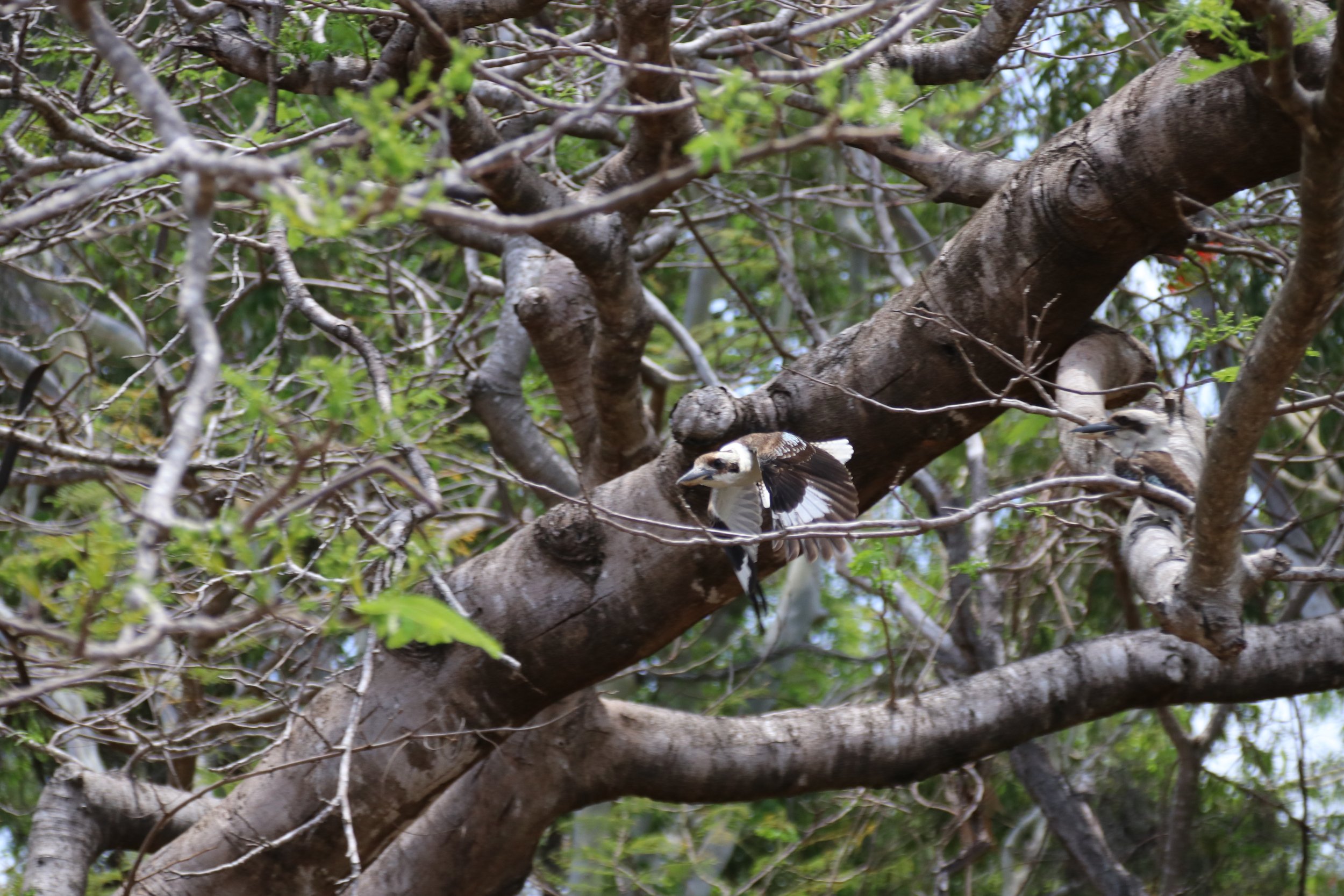
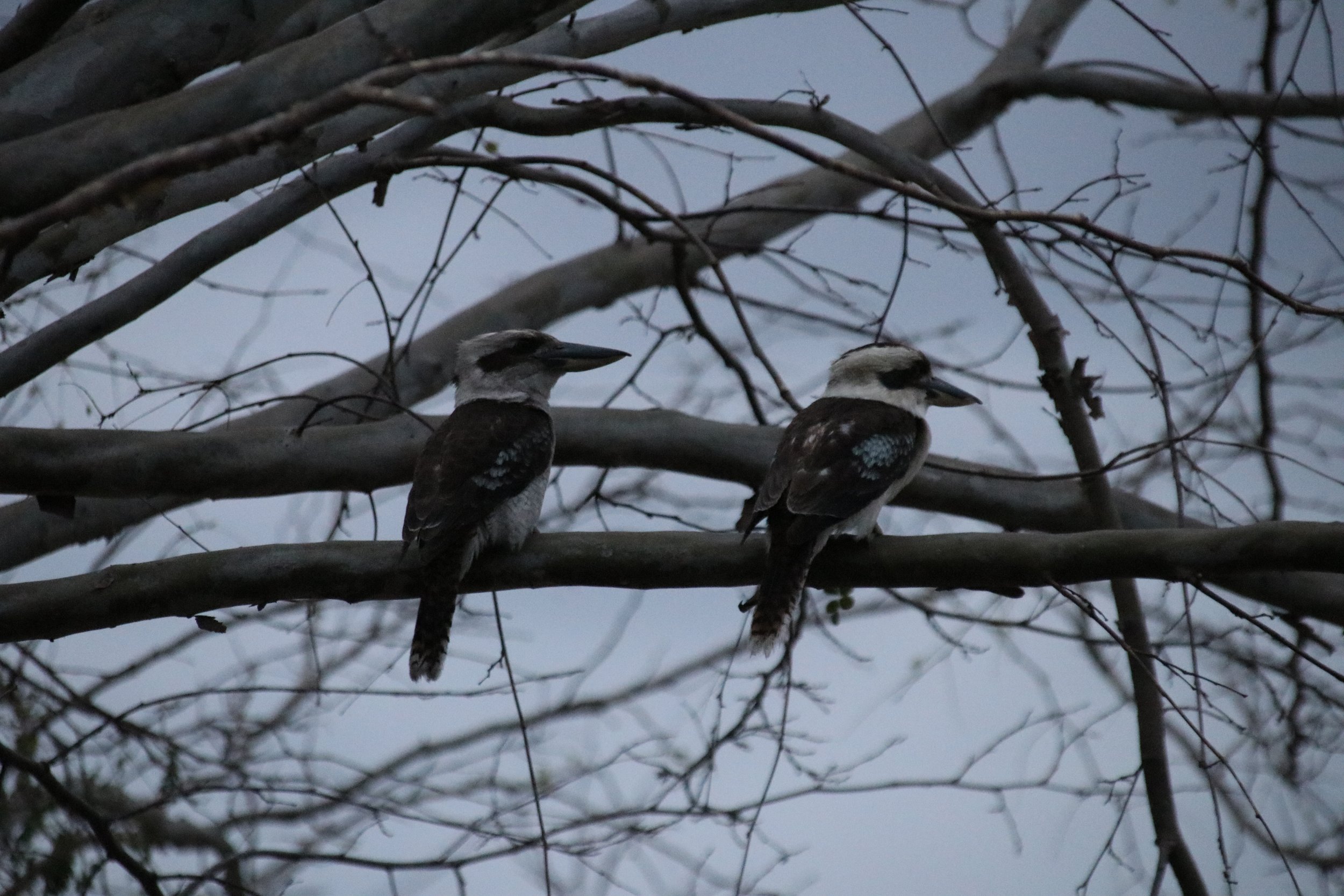
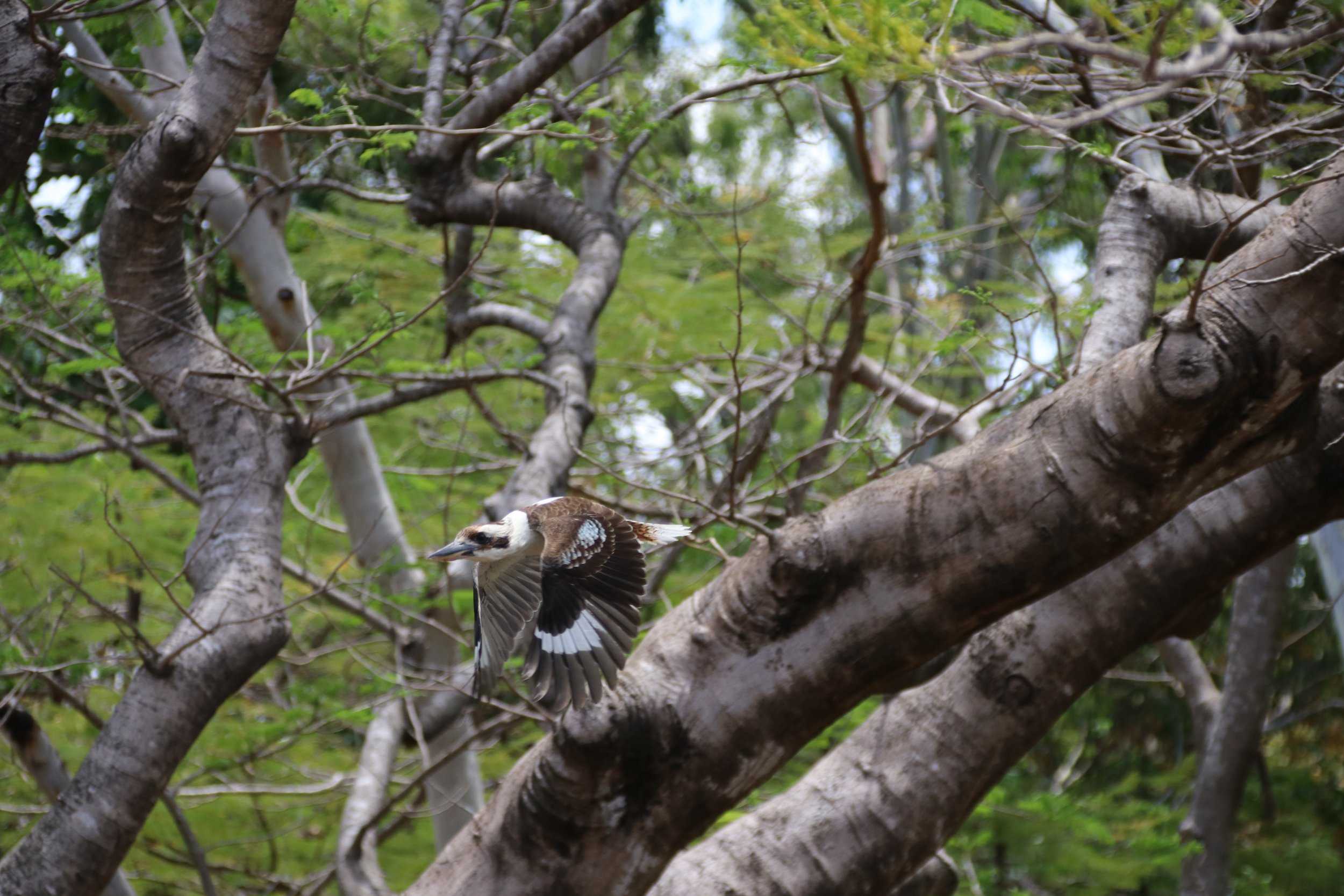
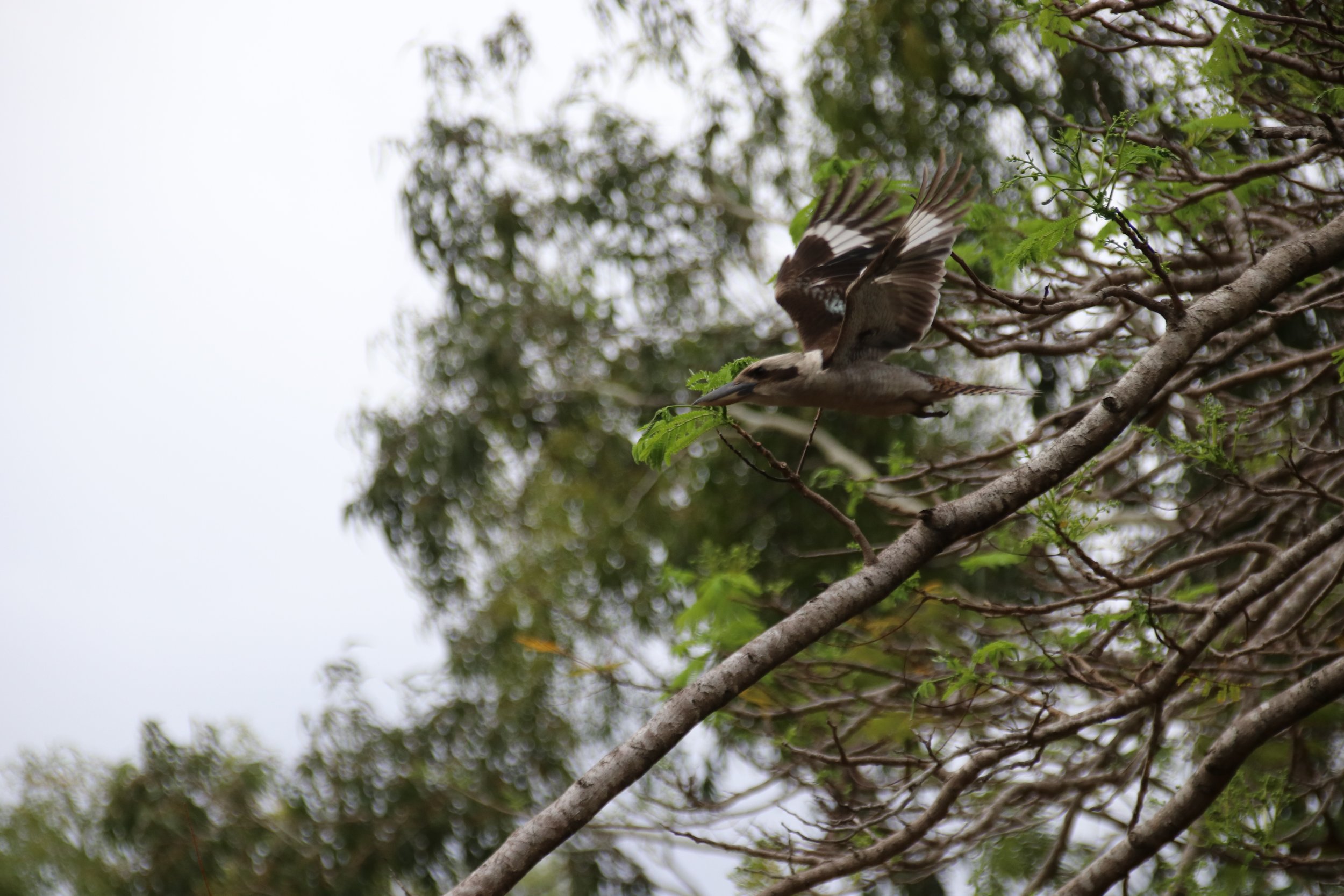
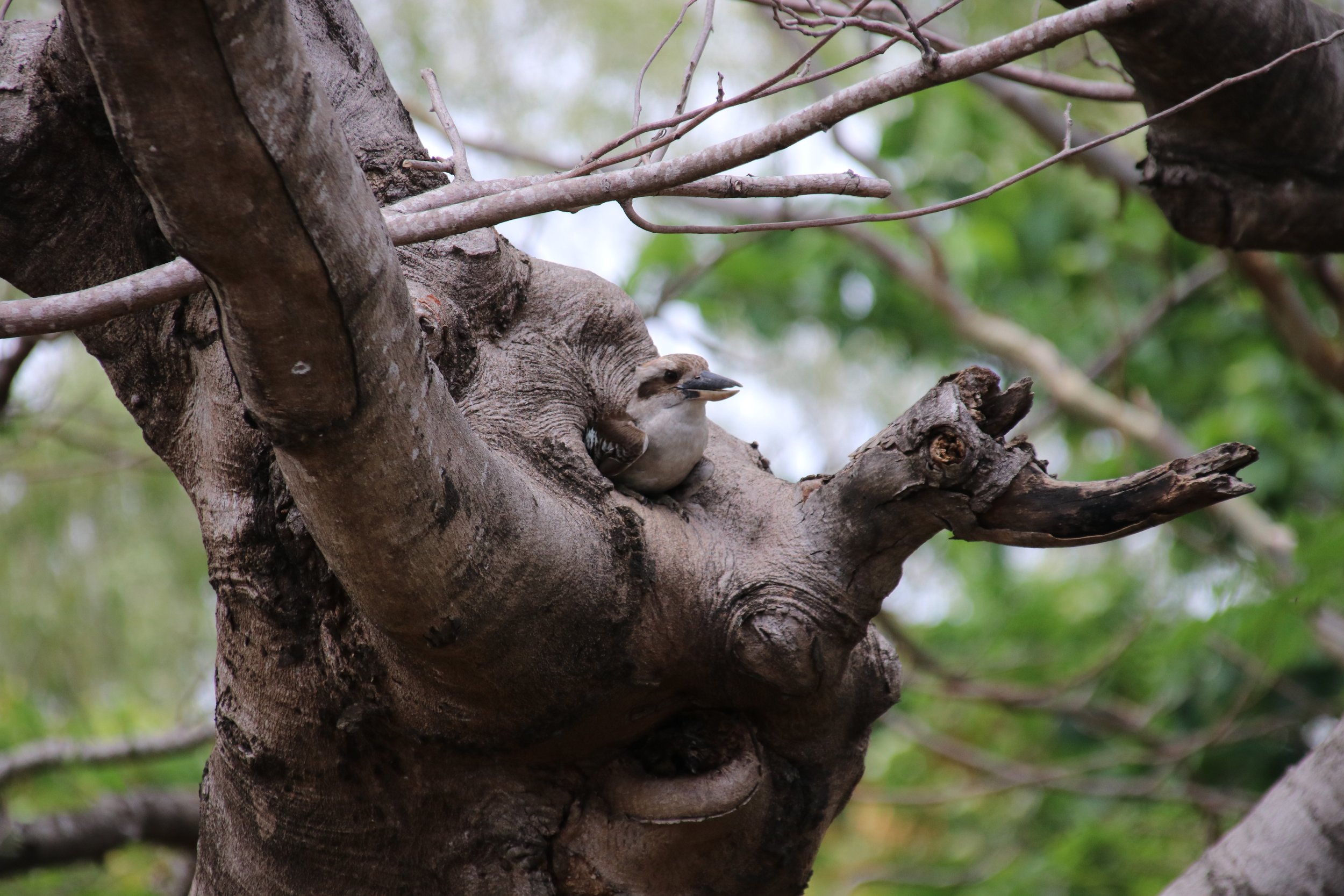
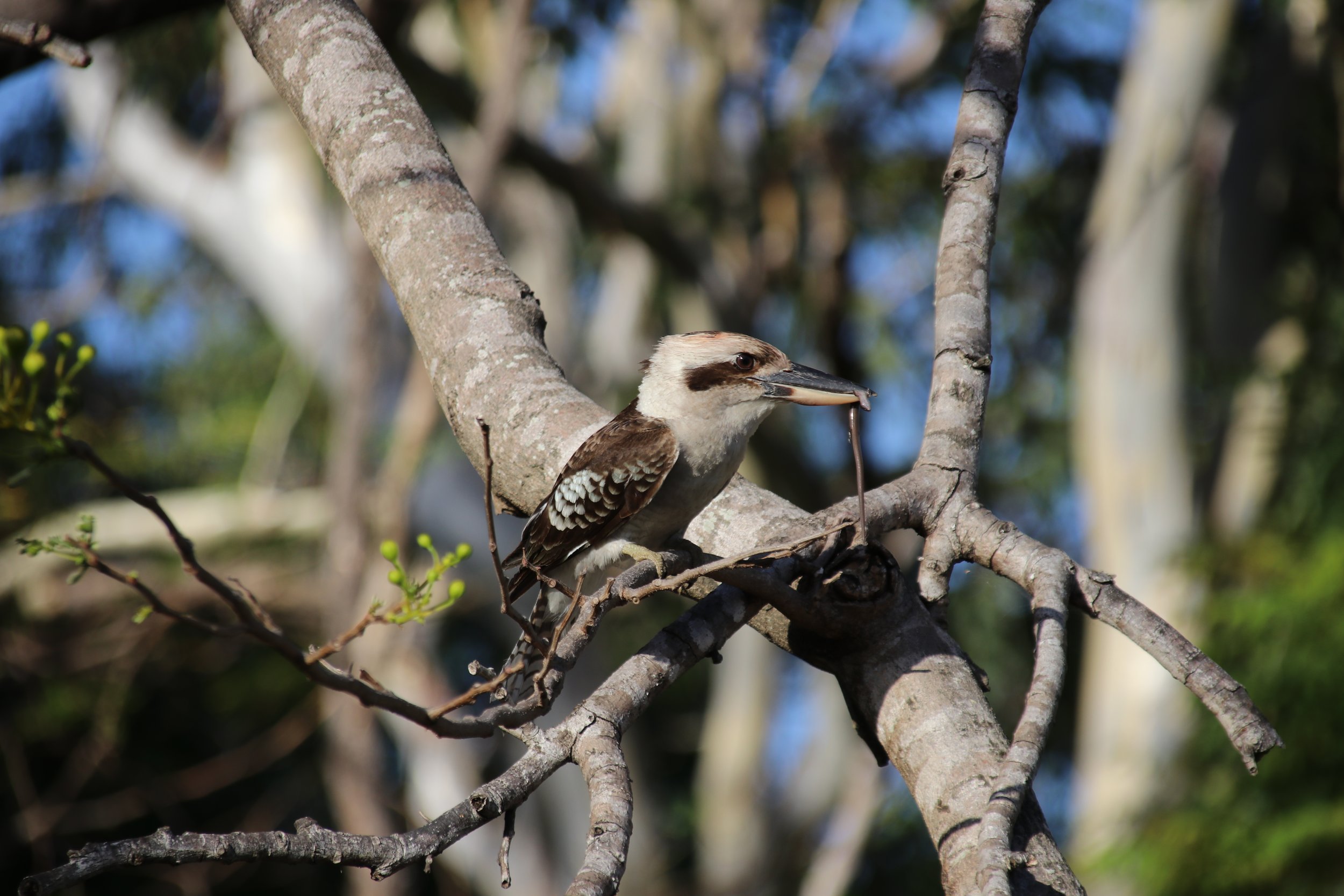
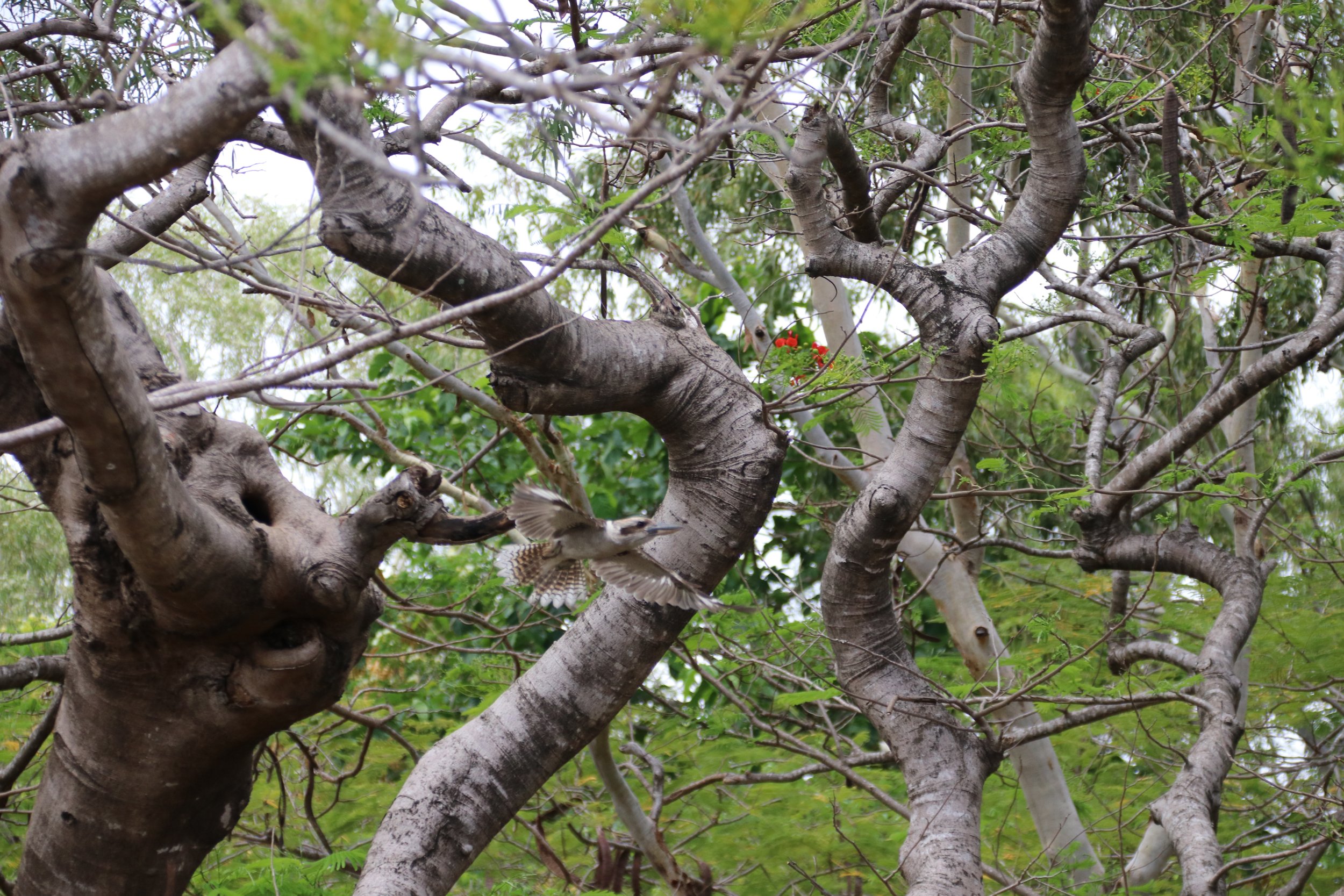

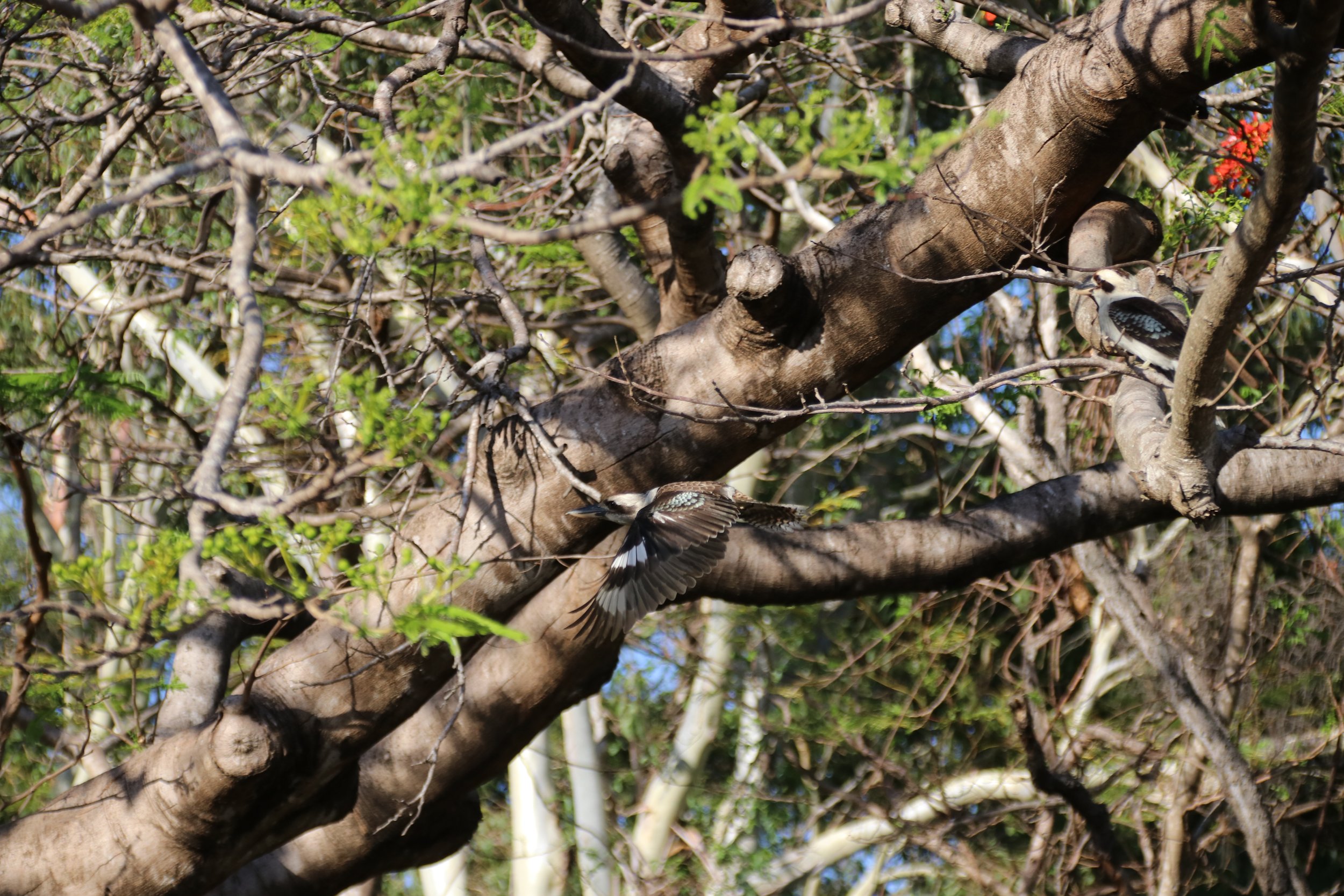
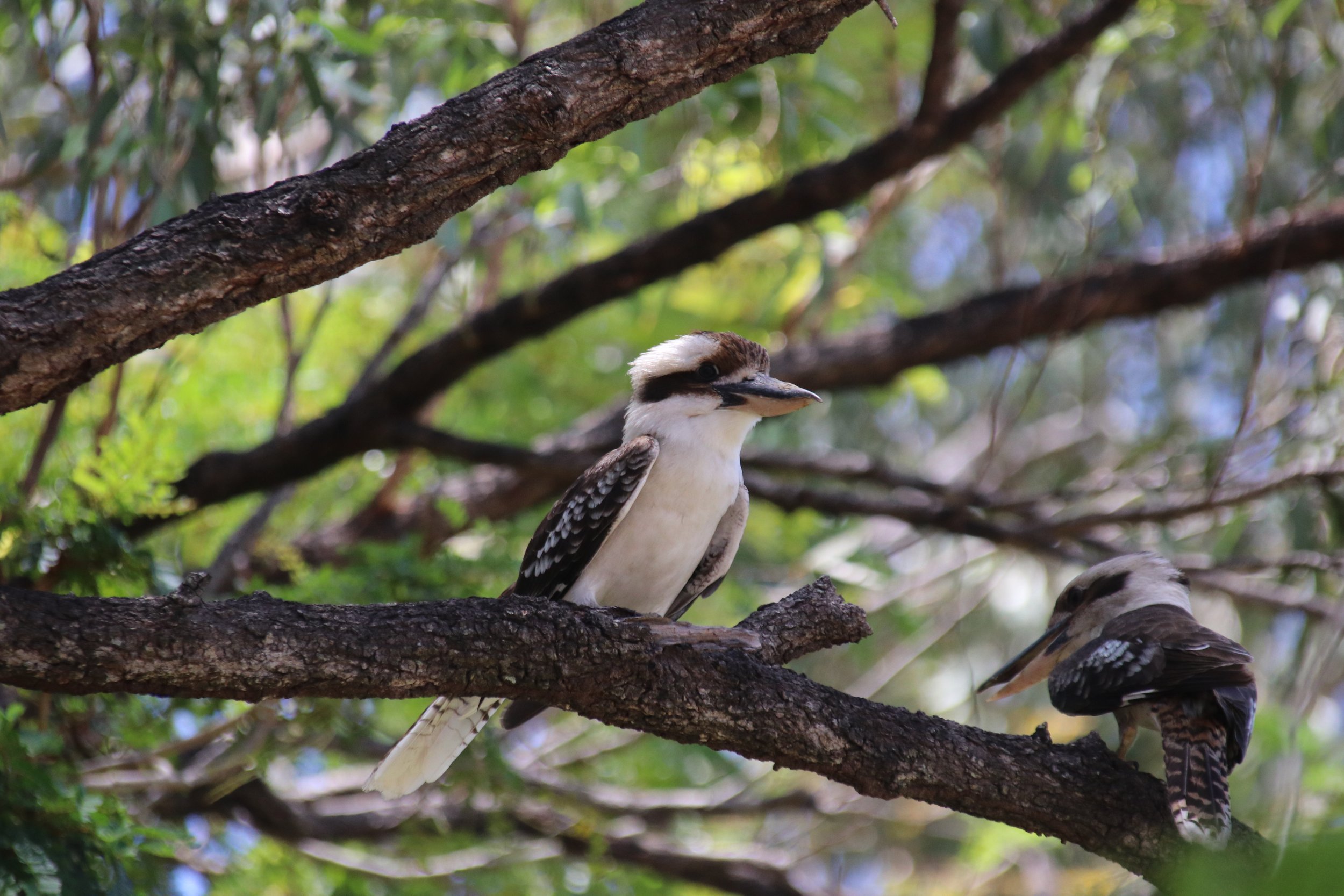
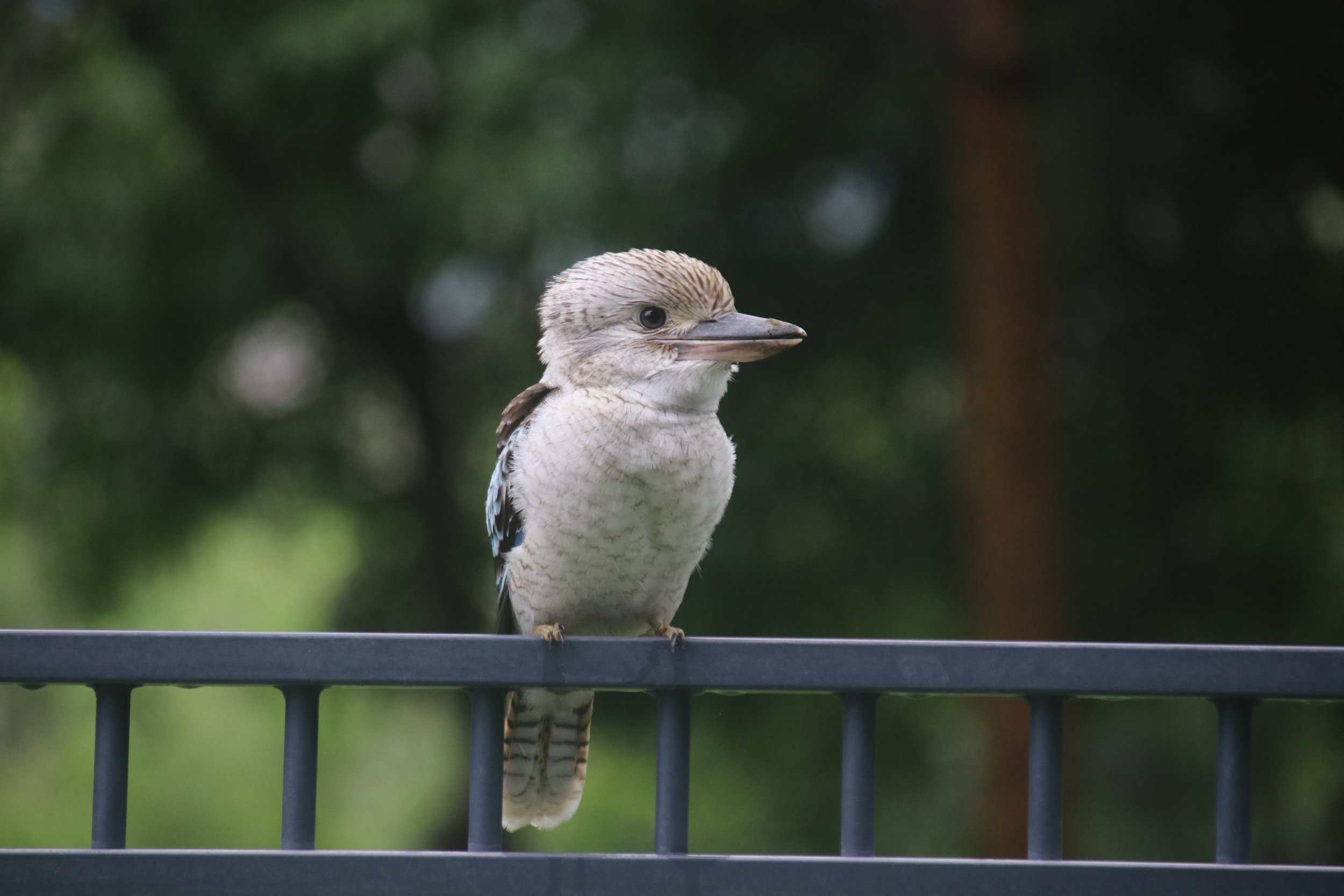
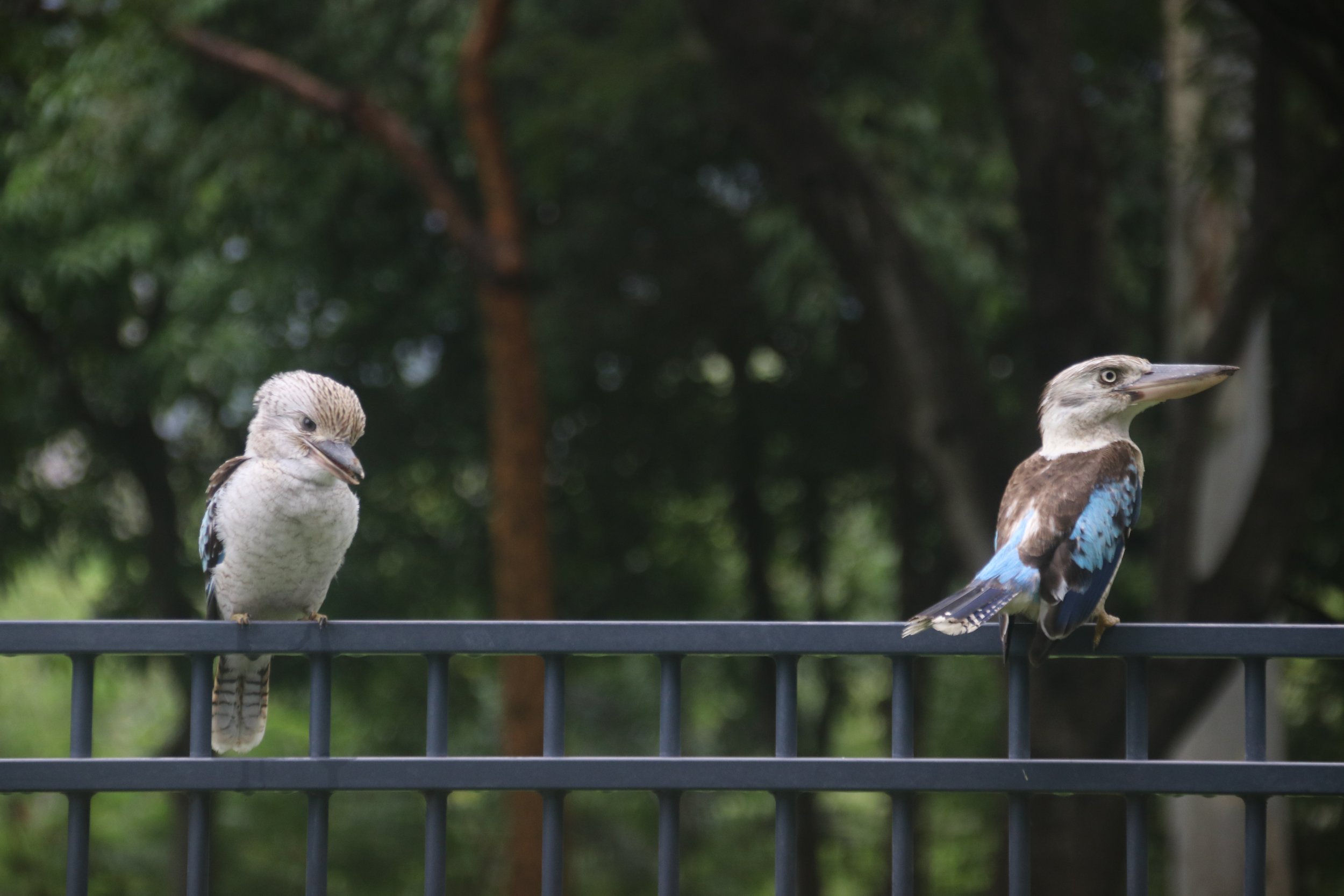
Published 10th January 2023. Last reviewed 10th January 2023.
Reference
Kookaburra. Wikipedia website. https://en.wikipedia.org/wiki/Kookaburra. Updated September 11, 2022. Accessed January 12, 2023.
Laughing Kookaburra. Australian Museum website. https://australian.museum/learn/animals/birds/laughing-kookaburra/. Updated July 29, 2022. Accessed January 12, 2023.
Laughing Kookaburra. Birds in Backyards website.https://www.birdsinbackyards.net/species/Dacelo-novaeguineae. Accessed January 12, 2023.
Laughing Kookaburra. National Geographic website. https://www.nationalgeographic.com/animals/birds/facts/laughing-kookaburra. Accessed January 12, 2023.
Peter Slater, Pat Slater, Raoul Slater. (2009). The Slater Field Guide to Australian Birds. 2nd ed. New Holland Publishers.
Richard Pallardy. Kookaburra. Britannica website. https://www.britannica.com/animal/kookaburra. Updated July 05, 2022. Accessed January 12, 2023.





























